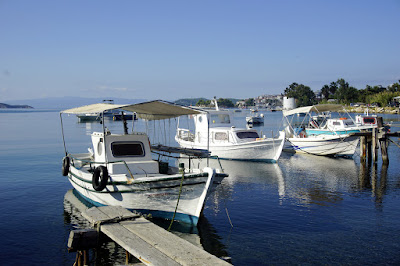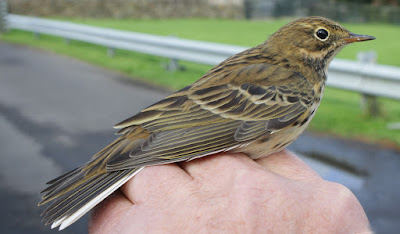If the weather was kind to us in Skiathos, it has been very unfriendly since we arrived home. Going from wall-to-wall sunshine and 30 degrees and then back to the usual British rain, wind and 12 degrees is quite a shock to the system.
Until I can get out birding or ringing I put together some pictures from 3 weeks in sunny Skiathos. There lots of pictures. “Click the pic” for a close-up.
Skiathos from The Bourtzi
Skiathos
Old Harbour Skiathos
Skiathos 1907
Skiathos 2019
Skiathos 2019
Skiathos 1907
The Bourtzi - Skiathos
Birding Skiathos is unremarkable in September when despite the summery weather, many local birds have left for Africa and migrant birds from further north have also flown south. Although Skiathos is just 15 km from the Pelion peninsula of mainland Greece, this tiny island does not appear to attract a huge variety of migrant birds. Perhaps migrant birds from Northern Europe continue on a southerly track through the Peloponnese rather than take an easterly turn across the waters just to visit Skiathos?
Skiathos
Of course there are always birds to see, albeit of a limited range of species. Our count was an unscientific approximation of around 40 species during our three weeks. As might be expected this included exotica like Scop’s Owl, Bee Eater, Eleonora’s Falcon, Blue Rock Thrush and Red-rumped Swallow, but also common species like Yellow Wagtail, Buzzard, Blackcap, Kingfisher and Raven.
The most numerous migrant species were Spotted Flycatcher, Whinchat, Willow Warbler/Chiffchaff, Red-backed Shrike, Wheatear and Barn Swallow with a constant almost daily turnover of individuals.
Red-rumped Swallow
Yellow Wagtail
Red-backed Shrike
Spotted Flycatcher
Blue Rock Thrush
Whitethroat
Yellow-legged Gull
Eleonora's Falcon
Whinchat
There were thousands of butterflies this year with huge numbers of Swallowtails and Hummingbird Hawk Moths especially noticeable.
Swallowtail
Hummingbird Hawk Moth
We had a jeep from local firm Mustang for 19 of our 21 days. Driving in Skiathos is a doddle; apart from Brits looking in the wrong direction while crossing the road, crazy quad riders, taxis on airport days, and the myriad of mopeds and motorbikes. Having a vehicle meant we could visit many parts of this beautiful island to enjoy the spectacular weather.
At Hotel Ostria and also on our daily trips through this cosmopolitan island we met people from many European nations; Britain, Croatia, Romania, Italy, Norway, Sweden, Bulgaria, Germany, mainland Greece - Kalamata, where the world’s best olives are grown. All had come to experience the most picturesque and friendliest island in all of Greece where more than 60 beaches appeal to sun-seekers.
In the mountains fire trucks are on permanent look out for fires that start in the tinder dry landscape of a Skiathos summer.
Fire Truck near Ligaries
On the road to Ligaries
Ligaries
Megali Aselinos Beach
A cool start at Megali Aselinos
Megali Aselinos
Megali Aselinos
Road to Megali Aselinos
Xanemos
Xanemos
Skiathos Town
Coffee Time - The Bourtzi
The Boatyard Skiathos
Koukounaries beach
Koukounaries
That's all for now folks. Back soon with more pics and clicks on Another Bird Blog.
Linking this post to https://viewingnaturewitheileen.blogspot.com.
Linking this post to https://viewingnaturewitheileen.blogspot.com.


















































































.jpg)












